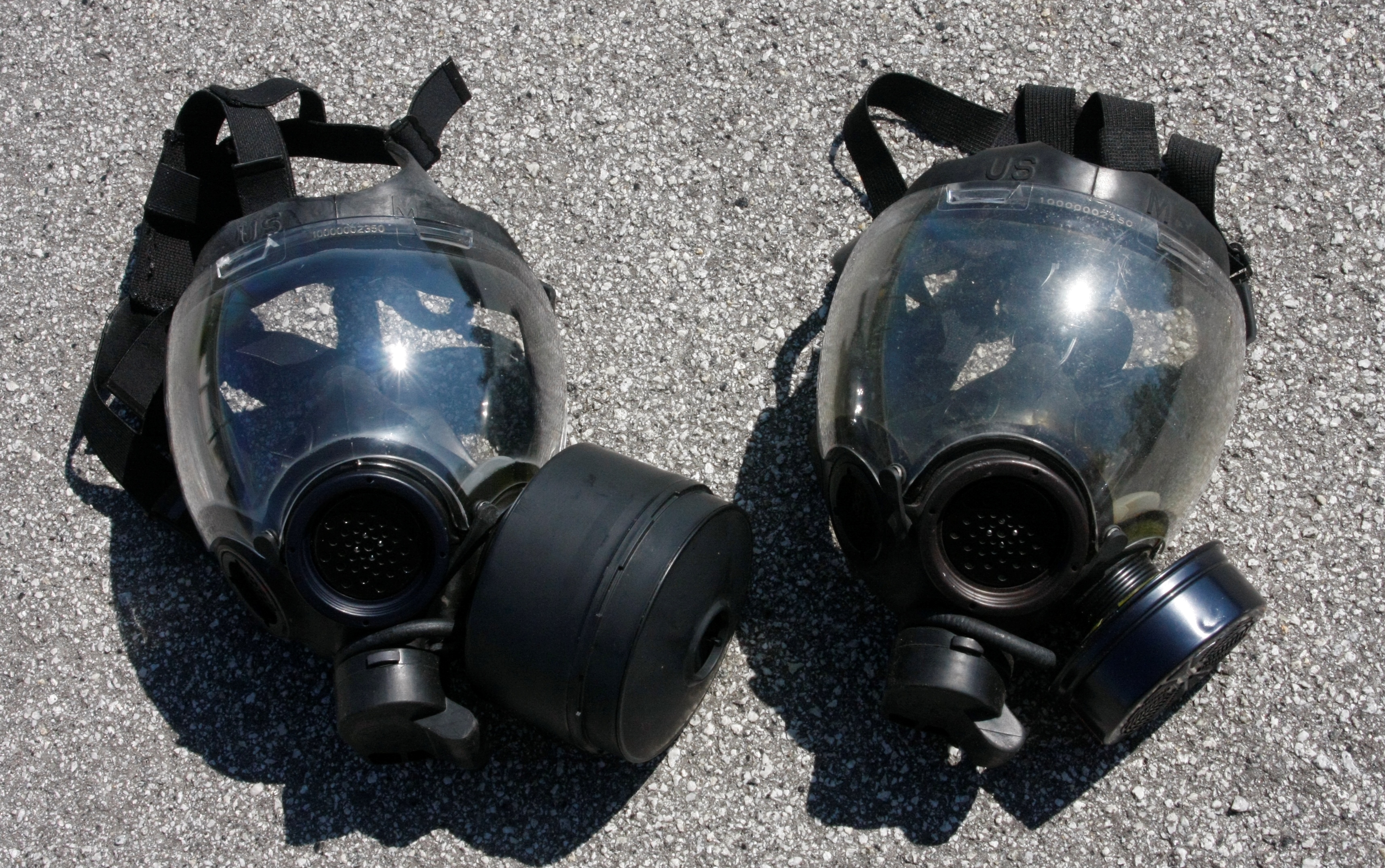

However, their efficacy for SARS-CoV-2 protection has not been explored, and the virus has a smaller calibre (0.1–0.15 µm). FFP2 or FFP3 masks can provide proper protection, as these masks have an efficiency of 95%–99% when tested with 0.30 µm particles. The French Army Biomedical Research Centre provided our hospital with military masks equipped with P3 filter cartridges and an integrated ventilation unit that would allow safe performance of this procedure when faced with a high risk of virus transmission ( Figure 1). Tracheotomy is frequently indicated for patients with COVID-19 suffering from severe acute respiratory syndrome (SARS). Air first enters the particle filter and then goes through the gas filter (composed of activated carbon).Awareness of this device and the ability to perform surgery with this procedure could be crucial during pandemics. Gas and particles combined respirator cartridgeĪs suggested by their name, combined filters block both gases and particles.

P3 class – higher efficiency, blocking at least 99,95% of the substance (penetration below 0,05%) P2 class – intermediate efficiency, blocking at least 94% of the substance (penetration below 6%)

P1 class – lower efficiency, blocking at least 80% of the substance (penetration below 20%) Particles filters are gathered into three categories: Class 3: For a gas rate below 1% volume Class 2: Cartridge filter (like A2B2 or ABEK2) – intermediate capacity, gas rate below 0.5% volume Class 1: Canister filter (like A1 or ABEK1) – lower capacity efficiency, gas rate below 0,1% volume
#Gas mask respirator full#
There is likely – for each gas or gas family – three respiratory protection efficiency classes defined by the EN143 and EN143/A1 standards:Īccording to the mask type (half mask or full face mask), maximal allowed concentrations of toxic substances (gas or vapor) will be different – 50 times the OEL (occupational exposure limit) for a half mask respirator and 2000 times the OEL for a full-face mask respirator.
#Gas mask respirator code#
Each filter type is labeled with a letter and a color code specific to each gas or gas family according to the EN14687 European standard. There are different types of gas mask filters depending on gases or vapors nature. Thanks to their 5 straps, they can be equipped with filtering cartridges over 300 grams including complete particles and gas protective combinations like ABEK2-P3 filters which are the most common cartridges used in industry. Even if they are heavier than a half mask respirators, they provide full protection of the breathing tracts (nose and mouth) and eyes as well which makes them safer. Filtering cartridges shall not be over 300 grams which limits the particles and gases combined cartridges like the well known ABEK2-P3 filtering cartridgesĪ full face respirator – also known as panoramic respirator – offer users a large field of view up to 98%. Substances to filter shall not be irritant to the eyes like chlorine, ammonia and derivatives or nitrous, sulfuric, hydrochloric acids… Half mask respirators however presents two main usage restrictions: It is composed by a soft seal and an adjustable harness to ensure the breathing tracts safety. A respiratory protective half mask only covers the lower part of the face (nose and mouth).


 0 kommentar(er)
0 kommentar(er)
